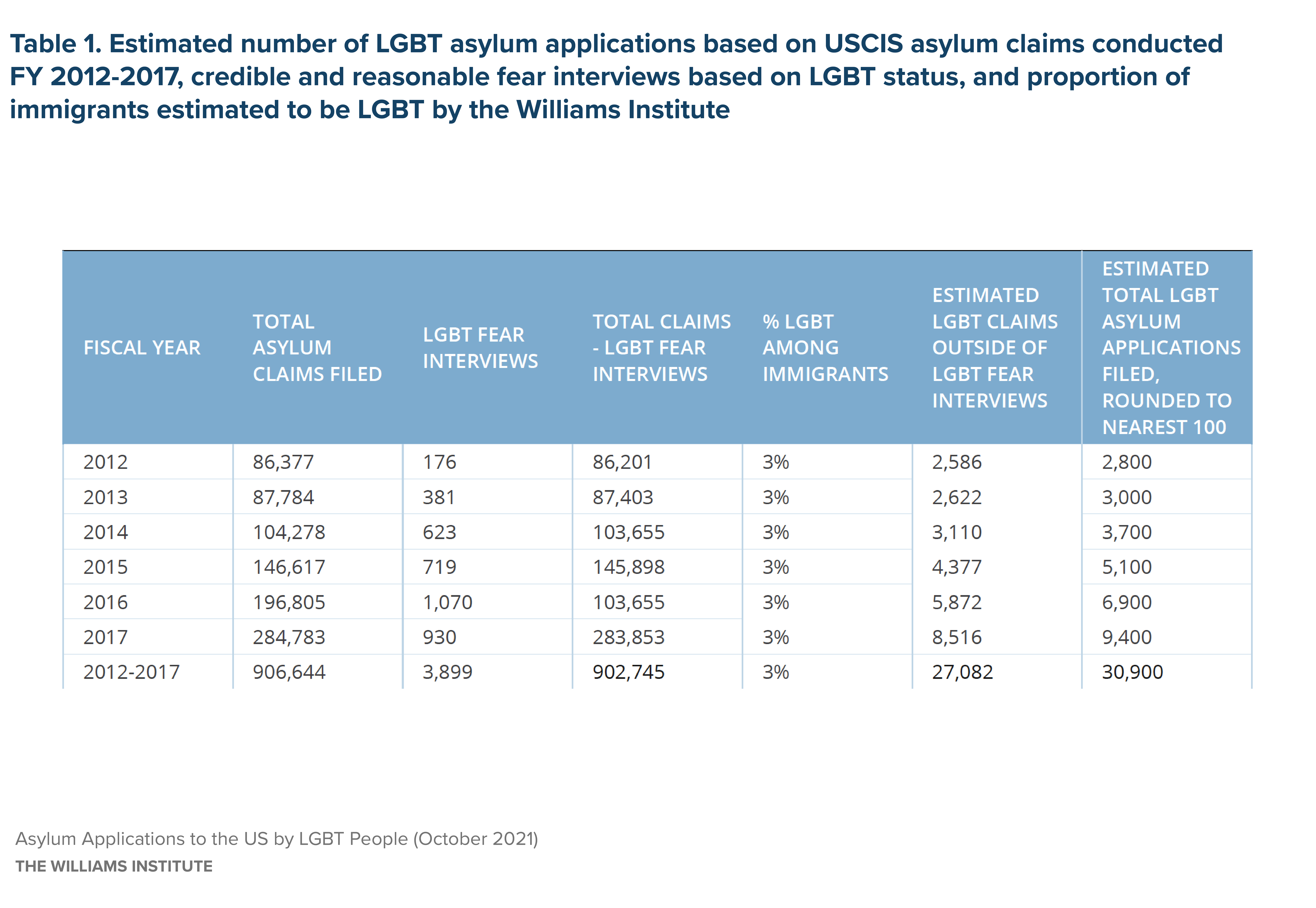In this fact sheet, we estimate the number of LGBT people seeking asylum in the U.S. for any reason using data from the United States Citizenship and Immigration Services (USCIS) and information about LGBT immigrants previously generated by the Williams Institute. These estimates are intended to further knowledge about the number of LGBT asylum seekers to the United States. Neither the United States Citizenship and Immigration Services (USCIS), a division of the Department of Homeland Security (DHS), nor the Executive Office for Immigration Review (EOIR) within the Department of Justice publishes statistics on asylum claims based on sexual orientation and/or gender identity or systematically collects data regarding the LGBT status of asylum seekers. A lack of actual counts from official sources necessitates the production of estimates. Please refer to LGBT Asylum Claims in the United States for recommendations to improve the collection of data about LGBT asylees to the U.S.
Estimates contained in this fact sheet draw upon information from the USCIS Asylum Pre-Screening System about the number of asylum applications filed during FY 2012-2017 on the basis of “membership in a particular social group,” coded by USCIS as sexual orientation or gender [identity]-related (hereafter “LGBT status”), and that resulted in fear interviews with USCIS asylum officers. This data source has been described in detail in LGBT Asylum Claims in the United States. As reported previously, a total of 3,899 asylum applications based on LGBT status that resulted in fear interviews were filed in the U.S. during FY2012-2017.
Asylum applications based on LGBT status that resulted in fear interviews recorded in the USCIS Asylum Pre- Screening System likely represent a small segment of all LGBT asylees. LGBT people seeking asylum may be fearful about coming out to USCIS asylum officers, accompanying family, and/or other refugees, or they may be unaware of their ability to seek asylum based on LGBT status. Additionally, the USCIS Asylum Pre-Screening System data do not include asylum seekers who were turned away at the border without having a chance to appear before USCIS officials or individuals whose claims were not coded by asylum officers as relating to LGBT status. Furthermore, there may be some asylum seekers placed into removal proceedings who make LGBT claims without going through a fear interview. For these reasons, information about the percentage of all U.S. immigrants who are LGBT-identified may help to provide a more complete understanding of the total number of LGBT asylum seekers.
The percentage of U.S. immigrants who are LGBT-identified (3%) was used to generate an estimate of the number of LGBT people seeking asylum in the U.S. for any reason eligible by law (i.e., on the basis of persecution or reasonable fear of persecution on account of race, religion, nationality, political opinion, or membership in a particular social group). Three percent was applied to the number of asylum applications during FY 2012- 2017 for which there was no recorded LGBT fear interviews. An estimated 27,082 asylum applications were filed by LGBT people in the U.S. for reasons other than LGBT status between FY2012-2017. In total, an estimated 30,900 applications for asylum in the U.S. were filed by LGBT adults for any eligible reason during FY 2012-2017, representing an average of 6,200 applications per year.
